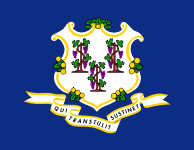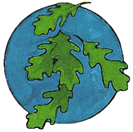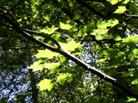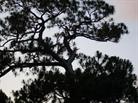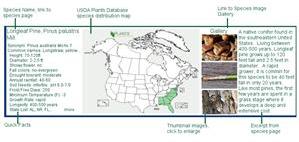



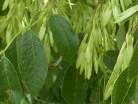
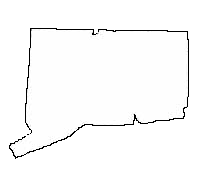
State Tree: White Oak
Connecticut
The Constitution State, 'He who transplanted sustains'



™

- Trees
- A-Z scientific
- A-Z by Common Name
- Families
- Aceraceae Maple Family
- Anacardiaceae Sumac Family
- Annonaceae Custard Apple Family
- Aquifoliaceae Holly Family
- Arecaceae, Palm Family
- Betulaceae Birch family
- Bignoniaceae Trumpet Creeper Family
- Burseraceae Frankincense Family
- Caprifoliaceae Honeysuckle Family
- Chrysobalanaceae Coco-plum Family
- Cornaceae Dogwood Family
- Cupressaceae Cypress Family
- Cyrillaceae Cyrilla Family
- Ebenaceae Ebony Family
- Ericaceae Heath Family
- Fabaceae Pea Family
- Fagaceae Beech Family
- Hamamelidaceae Witch Hazel Ffamily
- Hippocastanaceae Horse Chestnut Family
- Juglandaceae Walnut Family
- Lauraceae Laurel Family
- Leitneriaceae Corkwood Family
- Magnoliaceae Magnolia Family
- Meliaceae Mahogany Family
- Moraceae Mulberry Family
- Myricaceae Bayberry Family
- Myrsinaceae Myrsine Family
- Myrtaceae Myrtle Family
- Nyctaginaceae Four Oclock Family
- Olacaceae Olax Family
- Oleaceae Olive Family
- Pinaceae Pine Family
- Platanaceae Plane Tree Family
- Polygonaceae Buckwheat Family
- Rhamnaceae Buckthorn Family
- Rosaceae Rose Family
- Rubiaceae Madder Family
- Rutaceae Rue Family
- Salicaceae Willow Family
- Sapindaceae Soapberry Family
- Sapotaceae Sapodilla Family
- Simaroubaceae Quassia Family
- Styracaceae Storax Family
- Symplocaceae Sweetleaf Family
- Theaceae Tea Family
- Tiliaceae Lindon Family
- Ulmaceae Elm Family
- Taxaceae Yew Family
- Yucca Family
- Browse by State
- Rare or Endangered Species
- Trees_with_Special_Uses
- Tallest and Biggest
- Noxious Weeds
- Causes
- About Us
- Our Stores
Native Trees of Connecticut

Want to add your tree to our picture gallery? Click here for details!
-Color denotes a tree that is rare or endangered


Custom Search
We are part of the Hubpages community.
Click here for more info.
Click here for more info.
One of Connecticut's many natural
wonders are the remnants from the time of
glaciers. A stroll along the famous beaches of
Long Island Sound reveals sediment left over
from 2 separate periods where glaciers covered
all of Connecticut. Although much of it is sand to
pebble size, some is as fine as silt or as large
as boulders. Even hiking through the woods on
part of the Appalachian Trail, you may see
scattered rocks and boulders, the rounded
corners evidence of glacial wearing, which

seem out of place. These boulders are also some of the debris left by the glacial retreats
and upon touching them, you can be physically connected to events occurring between
15,000 and 17,500 years ago. Stand alone large angular slabs of rocks are a gateway to
26,000 years ago when glacial runoff filled cracks in the the rocks, then froze and expanded,
separating the rocks and moving them. The cold glacial history is evident just about
anywhere you look in Connecticut.
In some areas, large shiny boulders lie at the base of outcroppings. The glimmer in the
sunlight can be attributed to the composition, called schist, which contains high amounts of
mica and amphibole. Made from high pressure and heat, this ancient rock from deep within
the earth splits and breaks easily and is often covered in a blanket of lichen. With such
geological upheaval and change in its past, waterfalls are common and are the highlight of
many state parks. Bisected by the Connecticut River, central Connecticut is home to the
beautiful and pristine Connecticut River Valley and has a wide variety of birds and wildlife.
There are also many lakes that offer great fishing in the summer and great, if not colder, ice
fishing in winter. Connecticut is a unique landscape, with exposed ancient bedrock,
waterfalls, and more forested land within its borders than any other state. With over 130
state maintained parks and forests, finding a weekend getaway is just a short drive down the
road.
Connecticut Tree Facts
Forested acres: 1.68 million
Percent of land forested: 60% (approximate)
Number of State Parks or Forests: 105 parks, 32 state forests
Number of National Forests: 0
Number of Tree city USA communities: 19
Number of invasive trees: 53 (see state list for noxious/invasive plants)
Damaging insects of high concern: Emerald Ash Borer
Number of tree families in our collection: 26
Number of endangered or threatened species in our collection: 11
References:
Connecticut Judicial Branch, Law Libraries
Connecticut.gov
National Park Service, http://www.fs.usda.gov/
USDA, Forestry Service, FEIS
EDDMapS. 2013. Early Detection & Distribution Mapping System. The University of Georgia - Center for Invasive Species and Ecosystem Health. Available online at http://www.eddmaps.org/; last accessed January 17, 2013.
Additional state resources:
Connecticut State Department of Energy and Environmental Protection, Parks and Forests
Percent of land forested: 60% (approximate)
Number of State Parks or Forests: 105 parks, 32 state forests
Number of National Forests: 0
Number of Tree city USA communities: 19
Number of invasive trees: 53 (see state list for noxious/invasive plants)
Damaging insects of high concern: Emerald Ash Borer
Number of tree families in our collection: 26
Number of endangered or threatened species in our collection: 11
References:
Connecticut Judicial Branch, Law Libraries
Connecticut.gov
National Park Service, http://www.fs.usda.gov/
USDA, Forestry Service, FEIS
EDDMapS. 2013. Early Detection & Distribution Mapping System. The University of Georgia - Center for Invasive Species and Ecosystem Health. Available online at http://www.eddmaps.org/; last accessed January 17, 2013.
Additional state resources:
Connecticut State Department of Energy and Environmental Protection, Parks and Forests
Follow the links to view species native to Connecticut. If the genus is not linked, species are listed on the family page.
Aceraceae, Maple
Anacardiaceae, Sumac
Rhus, Sumac
Betulaceae, Birch
Betula, Birch
Carpinus, Hornbeam
Corylus, Hazelnut
Ostrya, Hophornbeam
Bignoniaceae, Trumpet Creeper
Catalpa, Catalpa
Chilopsis, Desert Willow
Caprifoliaceae, Honeysuckle
Sambucus, Elderberry
Viburnum, Viburnum
Cornaceae, Dogwood
Cornus, Dogwood
Nyssa, Tupelo
Cupressaceae- Cypress
Chamaecyparis, Cedar
Juniperus, Juniper
Thuja, Arborvitae
Aceraceae, Maple
Anacardiaceae, Sumac
Rhus, Sumac
Betulaceae, Birch
Betula, Birch
Carpinus, Hornbeam
Corylus, Hazelnut
Ostrya, Hophornbeam
Bignoniaceae, Trumpet Creeper
Catalpa, Catalpa
Chilopsis, Desert Willow
Caprifoliaceae, Honeysuckle
Sambucus, Elderberry
Viburnum, Viburnum
Cornaceae, Dogwood
Cornus, Dogwood
Nyssa, Tupelo
Cupressaceae- Cypress
Chamaecyparis, Cedar
Juniperus, Juniper
Thuja, Arborvitae
Connecticut Tree Families and Genera
click to enlarge.
Useful information while browsing species:
• How to read a botanical name
• How to use our species boxes:
• How to read a botanical name
• How to use our species boxes:
-Color denotes a tree that is rare or endangered

Please note: This is not a complete list of all native tree families and species found in Connecticut. We are constantly working towards a more comprehensive list and will add families and their species as completed.
Additional Resources:
North American Native Tree Families
North American A to Z List by Scientific Name
North American A to Z List by Common Name
North American Native Tree Families
North American A to Z List by Scientific Name
North American A to Z List by Common Name
Fabaceae, Pea
Fagaceae, Beech
Quercus, Oak
Hamaelidaceae, Witch-hazel
Juglandaceae, Walnut
Carya, Hickory
Juglans, Walnut
Lauraceae, Laurel
Magnoliaceae, Magnolia
Moraceae, Mulberry
Morus, Mulberry
Myricaceae, Bayberry
Oleaceae, Olive Family
Fraxinus, Ash
Pinaceae, Pine
Abies, Fir
Pinus, Pine
Fagaceae, Beech
Quercus, Oak
Hamaelidaceae, Witch-hazel
Juglandaceae, Walnut
Carya, Hickory
Juglans, Walnut
Lauraceae, Laurel
Magnoliaceae, Magnolia
Moraceae, Mulberry
Morus, Mulberry
Myricaceae, Bayberry
Oleaceae, Olive Family
Fraxinus, Ash
Pinaceae, Pine
Abies, Fir
Pinus, Pine
Platanaceae, Plane-tree
Platanus, Sycamore
Rosaceae, Rose
Crataegus, Hawthorn
Malus, Crab-apple
Prunus, Plum/Cherry
Rubiaceae, Madder
Rutaceae, Rue
Salicaceae, Willow
Populus, Cottonwood
Salix, Willow
Tiliaceae, Lindon
Tilia, Basswood
Ulmaceae, Elm
Celtis, Hackberry
Ulmus, Elm
Platanus, Sycamore
Rosaceae, Rose
Crataegus, Hawthorn
Malus, Crab-apple
Prunus, Plum/Cherry
Rubiaceae, Madder
Rutaceae, Rue
Salicaceae, Willow
Populus, Cottonwood
Salix, Willow
Tiliaceae, Lindon
Tilia, Basswood
Ulmaceae, Elm
Celtis, Hackberry
Ulmus, Elm
Connecticut Endangered or Threatened Tree Species

This is not a comprehensive list but we are always working on adding more and will update accordingly.
Of Special Concern:
Acer nigrum, Black maple
Cercis canadensis, Eastern redbud
Diospyros virginiana, Common persimmon
Liquidambar styraciflua, Sweetgum
Picea rubens, Red spruce
Prunus alleghaniensis, Allegheny plum
Salix petiolaris, Meadow willow
Salix serissima, Autumn willow
Viburnum nudum, Possumhaw
Viburnum prunifolium, Blackhaw
Threatened:
Salix exigua, Narrowleaf willow
Thuja occidentalis, Northern White Cedar
Of Special Concern:
Acer nigrum, Black maple
Cercis canadensis, Eastern redbud
Diospyros virginiana, Common persimmon
Liquidambar styraciflua, Sweetgum
Picea rubens, Red spruce
Prunus alleghaniensis, Allegheny plum
Salix petiolaris, Meadow willow
Salix serissima, Autumn willow
Viburnum nudum, Possumhaw
Viburnum prunifolium, Blackhaw
Threatened:
Salix exigua, Narrowleaf willow
Thuja occidentalis, Northern White Cedar
Looking for a nursery near you?
Check out our nursery listing by county below!
Sorry, we do not currently have any tree nursery listings for this state. We do update these lists, so please check back.
Check out our nursery listing by county below!
Sorry, we do not currently have any tree nursery listings for this state. We do update these lists, so please check back.


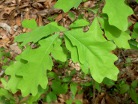
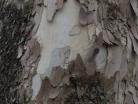
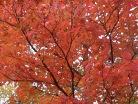
Endangered:
Abies balsamea, Balsam fir
Amelanchier sanguinea, Roundleaf serviceberry
Morus rubra, Red mulberry
Pinus resinosa, Red pine
Populus heterophylla, Swamp cottonwood
Quercus macrocarpa, Bur oak
Abies balsamea, Balsam fir
Amelanchier sanguinea, Roundleaf serviceberry
Morus rubra, Red mulberry
Pinus resinosa, Red pine
Populus heterophylla, Swamp cottonwood
Quercus macrocarpa, Bur oak
More so than many States, the state tree of
Connecticut is intertwined with dramatic and meaningful
history going back beyond the Declaration of
Independence by almost 100 years. In 1687, King James II was trying to revoke the
Charter signed by his predecessor, King Charles II, which granted Connecticut the right
to self governance. In the midst of meetings and distress, the Charter disappeared and
is said to have been hidden by Captain Joseph Wadsworth. In order to secure the
safety of the Charter and prevent
confiscation by the English
governor, it was placed in the hollow
of an unusually large white oak tree
on the estate of George Wyllys, one
of the first governors of the
Connecticut colony. This tree
became known as the Charter Tree
and is most certainly the most
famous tree to ever live in Hartford
and probably the entire state. This
icon of freedom and perseverance
fell during a storm on August 21,
1856, and while all that remains of
its physical form are shoot
descendants, it is forever preserved
on the Connecticut State quarter.
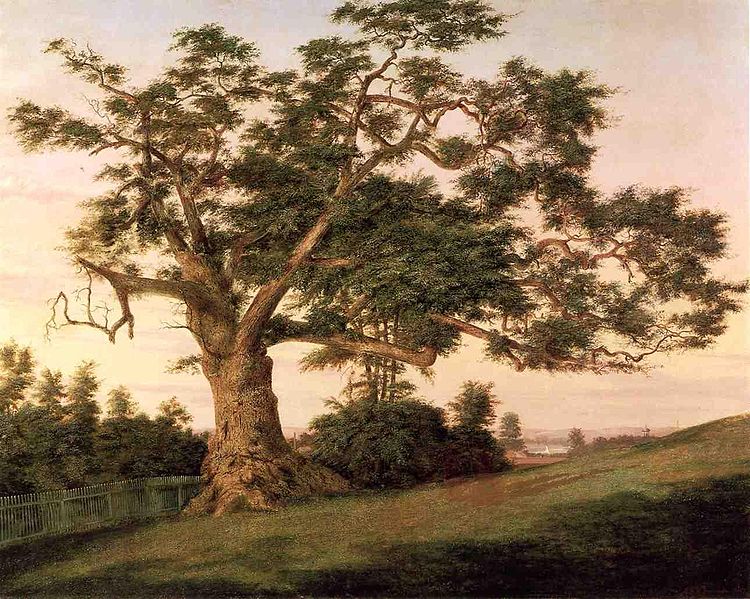
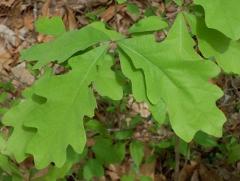
The Charter Oak, oil on canvas, Charles De Wolf Brownell, 1857.
White Oak, Quercus alba
©2012 TreesForMe Original Image. See usage requirements.
Botanically speaking, White Oaks are a medium sized deciduous tree, reaching 60 to 80 feet in height, found throughout the eastern half of North America. The leaves are lobed and yellowish green when young, turning darker with age. It is a slow growing species but may live as long as 600 years. White oak trees have high genetic variation and will hybridize with other members in the oak genus, Quercus.
The hard, heavy and strong wood has made this tree species the most important timber species in the southeastern part of its range. It glues and takes a finish well and is used to make furniture, veneer, flooring, railroad ties and even caskets. There is also a high demand for its use in whiskey barrels. White oak wood is also valued as fire wood.
Learn More
The hard, heavy and strong wood has made this tree species the most important timber species in the southeastern part of its range. It glues and takes a finish well and is used to make furniture, veneer, flooring, railroad ties and even caskets. There is also a high demand for its use in whiskey barrels. White oak wood is also valued as fire wood.
Learn More
Tree lists:
•A-Z by scientific
name
•A-Z by common
name
•By Family
For state A-Z list click state name below.
•A-Z by scientific
name
•A-Z by common
name
•By Family
For state A-Z list click state name below.
